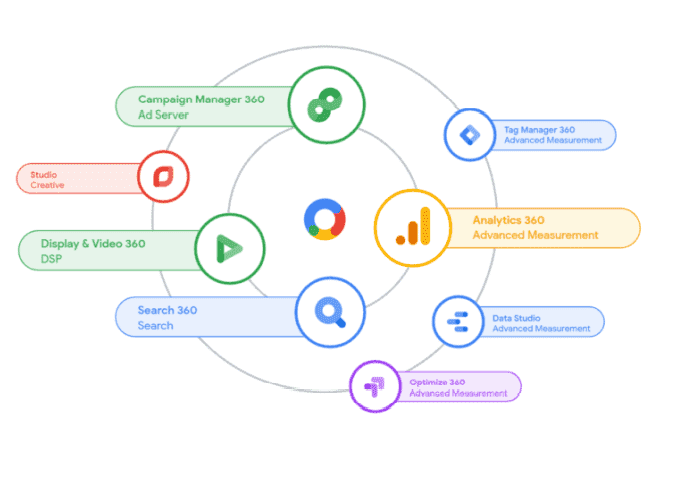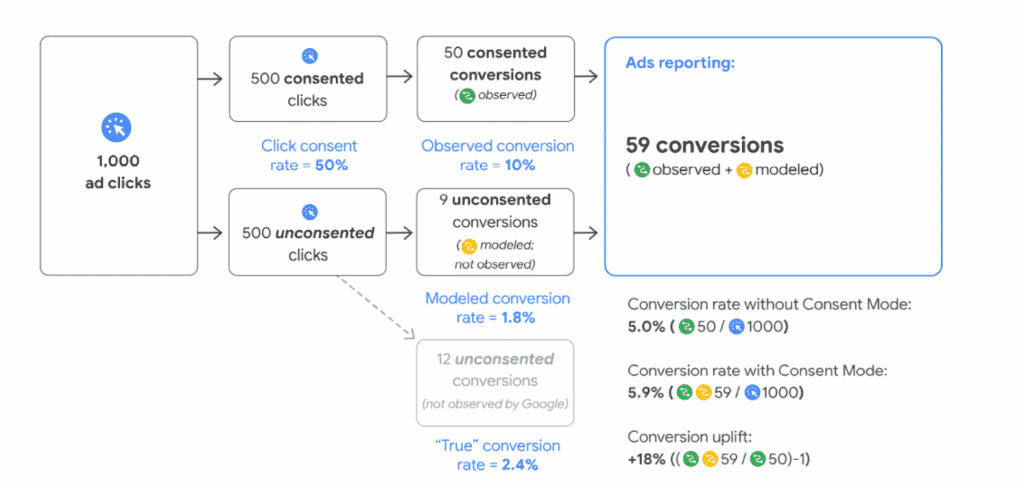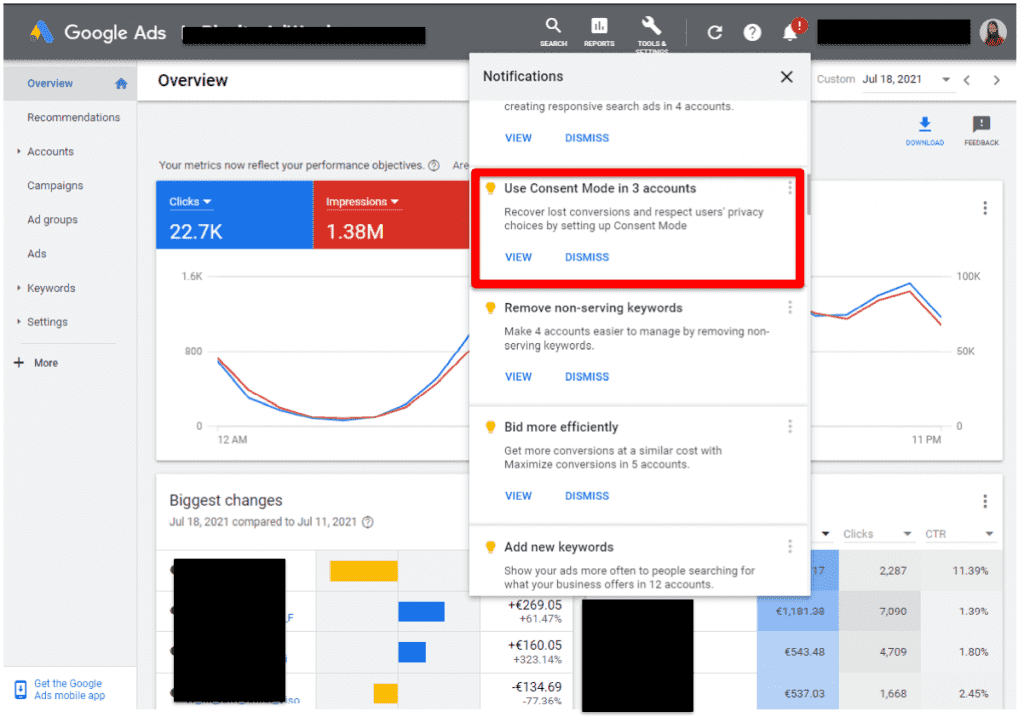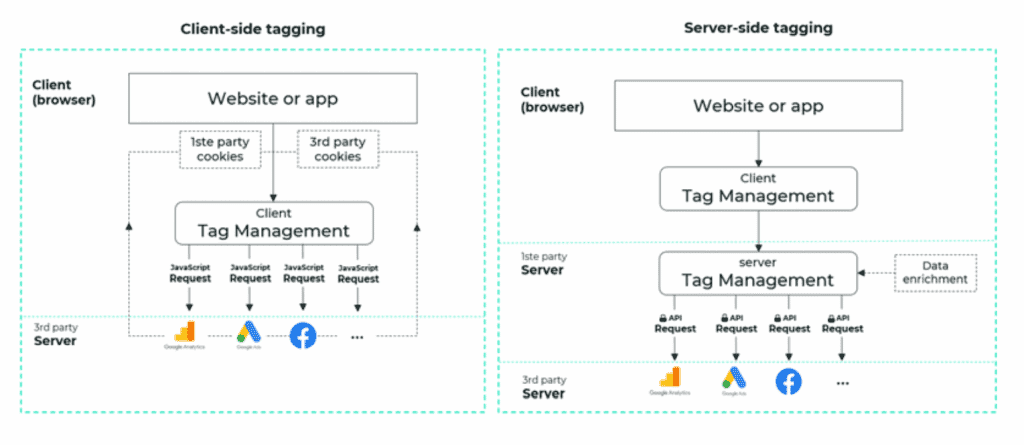Last week we had the chance to attend the ADworld Experience taking place in Bologna. The conferences took place over two days and 3 areas were discussed throughout: Google Ads, Facebook Ads, Other networks & CRO. In this article, we will focus on our 2 favorite topics regarding paid advertising.
Search Ads 360 Integration
The first presentation that caught our attention is the one from B. Garry about Search Ads 360 integration.
The promise of Search Ads 360 is to be able to integrate the different channels, search, social, and display into a single ecosystem to be able to optimize on unified conversions. It can mainly benefit the algorithm, which will be able to take advantage of the signals coming from the different channels in order to reinforce its optimizations.
In addition, it should be remembered that SA360 is integrated into the Google Marketing Platform. This makes it possible to:
- Optimize on floodlights (unified conversion)
- Use cross-channel attribution using campaign manager and/or Google Analytics
- Share cross-channel audiences
Meanwhile, it’s all compatible with Data Studio.

Furthermore, all these signals are for the benefit of a single algorithm that allows optimization on the different channels and takes advantage of the same attribution model. Plus, remarketing audiences can be created at different levels (campaign, keywords, etc.) using the URL parameter generated in SA 360.
The best bidding strategy of this ecosystem is tROAS associated with value based-bidding. Regarding the attribution model, you can always use the classic models (linear, time decay, etc.) but Garry’s recommendation is to integrate a custom attribution model in order to better adapt to the funnel and the media mix. This attribution model can easily be created in Campaign Manager or in Google Analytics.

This model can be very interesting in a business that has reached a certain digital maturity. However, for an advertiser who does not want to depend 100% on Google solutions, this model reinforces Google dependence. Moreover, it is legitimate to question what the future is in an upcoming cookieless world. How will the algorithm react to the loss of signals? Will it be artificially boosted by Google’s consent mode? Is this model worth the investment (tech fee SA360 + time-consuming) in a period of uncertainty regarding algorithms?
Red Goat Method
Another talk that caught our attention is the one from Matteo Zambon concerning the Red Goat method which focused on 4 points:
• Dynamic Remarketing
• Google Consent Mode
• Advanced converting
• Server-Side Tracking
We will focus first on Google’s solution for cookieless with their Google Consent Mode. Then, we will talk about Server-Side Tracking which might be another solution in order to face the loss of 3rd party cookies.
Google Consent Mode
Google Consent mode (beta) allows you to adjust how your Google tags behave based on the consent status of your users. You can indicate whether consent has been granted for Analytics and Ads cookies. Google’s tag will dynamically adapt, only utilizing measurement tools for the specified purpose when consent has been given by the user.
Products that support consent mode include:
- Google Ads
- Floodlight
- Google Analytics
Consent Mode on websites and mobile apps – Analytics Help (google.com)
As a reminder:
• Users browse your website and choose the consent method (via the classic cookie banner)
• Consent mode communicates with Google whenever it has consent to use cookies for Google Ads or Google Analytics
• When users do not give their consent, the corresponding Google tag will monitor their behavior to help observe conversions without the use of cookies
According to Google, the conversion rate of users who have not given their consent is generally lower than the one who have accepted it. Therefore, the potential of loss conversions is less important. The model would take into account the lower conversion rate of the unconsented part. If we compare it to a model without consent mode, the conversion rate uplift would only be 18% in the example below.

As of April 2021, Consent Mode can be enabled in accounts with Beta access.

According to Matteo, the consent mode will be able to recover more than 70% of ad-click-to-conversion journeys lost due to user consent choices.
Server-side tracking
Server-side tracking is managed and performed by the server itself which communicates directly with the various services (GA, GAds, FB, etc) through server-side scripts and/or APIs.
The advantages of server-side tracking are:
• Fewer scripts written in the pages. Therefore, the website may have better performance in terms of fluidity
• Greater control and quality of data, as you can clean, modify and add information that is server-side
• Minor risks of data loss or, even worse, data theft by third parties

The main difference lies in the fact that the data transferred to the server is now usable 1st party data.
Conclusion
The various regulations on private data were clearly at the heart of the discussions. For a near future, the way we are optimizing our campaign has to be rethink. Since those optimizations are based on algorithms it’s legit to question what’s going to happen to campaign performance. We don’t have the perfect answer to this question, but we can give you some advice.
First, control your data. Migrate to GA4 or any other analytics platform not based on third-party cookies.
Then, test, test, and test. The cookieless era has not fully begun but you need to try and test solutions. Consent mode, server-side tracking, top performance campaign… you need to gather as much information as possible before the dawn. It will help you to take better decisions once this day will arrive.
Finally, be ready to go back to basics. You might need to readapt your strategy and you want to be as granular as possible. A one-size-fits-all approach might not work anymore. Again, get as many insights as possible; location, demographic, behavior on search terms, competitors, etc. Then, you can adapt your campaign with a specific strategy, rework your structure, implement new creatives, adapt your message, and so on.
Ontvang onze inzichten rechtstreeks in je inbox
We duiken regelmatig in actuele onderwerpen op het gebied van digitale marketing en delen onze inzichten graag met jou.
